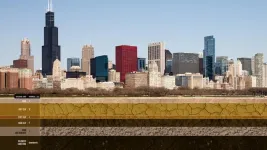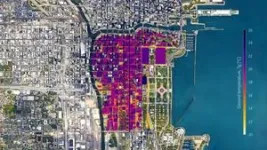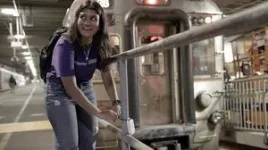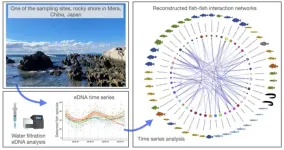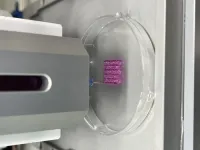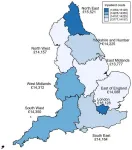There is a “silent hazard” lurking underneath our major global cities, and our buildings were not designed to handle it.
A new Northwestern University study has, for the first time, linked underground climate change to the shifting ground beneath urban areas. As the ground heats up, it also deforms. This phenomenon causes building foundations and the surrounding ground to move excessively (due to expansions and contractions) and even crack, which ultimately affects structures’ long-term operational performance and durability. Researchers also report that past building damage may have been caused by such rising temperatures and expect these issues to continue for years to come.
Although rising temperatures do pose a threat to our infrastructure, the researchers also view it as a potential opportunity. By capturing the waste heat emitted underground from subterranean transportation systems, parking garages and basement facilities, urban planners could mitigate the effects of underground climate change as well as reuse the heat into an untapped thermal energy resource.
The study will be published on July 11, in Communications Engineering, a Nature Portfolio journal. It marks the first study to quantify ground deformations caused by subsurface heat islands and their effect on civil infrastructure.
“Underground climate change is a silent hazard,” said Northwestern’s Alessandro Rotta Loria, who led the study. “The ground is deforming as a result of temperature variations, and no existing civil structure or infrastructure is designed to withstand these variations. Although this phenomenon is not dangerous for people’s safety necessarily, it will affect the normal day-to-day operations of foundation systems and civil infrastructure at large.
“Chicago clay can contract when heated, like many other fine-grained soils. As a result of temperature increases underground, many foundations downtown are undergoing unwanted settlement, slowly but continuously. In other words, you don’t need to live in Venice to live in a city that is sinking — even if the causes for such phenomena are completely different.”
Rotta Loria is an assistant professor of civil and environmental engineering at Northwestern’s McCormick School of Engineering.
What is underground climate change?
In many urban areas around the globe, heat continuously diffuses from buildings and underground transportation, causing the ground to warm at an alarming rate. Previous researchers have found that the shallow subsurface beneath cities warms by 0.1 to 2.5 degrees Celsius per decade.
Known as “underground climate change” or “subsurface heat islands,” this phenomenon has been known to cause ecological issues (such as contaminated ground water) and health issues (including asthma and heatstroke). But, until now, the effect of underground climate change on civil infrastructure has remained unstudied and little understood.
“If you think about basements, parking garages, tunnels and trains, all of these facilities continuously emit heat,” Rotta Loria said. “In general, cities are warmer than rural areas because construction materials periodically trap heat derived from human activity and solar radiation and then release it into the atmosphere. That process has been studied for decades. Now, we are looking at its subsurface counterpart, which is mostly driven by anthropogenic activity.”
Chicago as a living laboratory
In recent years, Rotta Loria and his team installed a wireless network of more than 150 temperature sensors across the Chicago Loop — both above and below ground. This included placing sensors in the basements of buildings, subway tunnels, underground parking garages and subsurface streets like Lower Wacker Drive. For comparison, the team also buried sensors in Grant Park, a greenspace located along Lake Michigan — away from buildings and underground transportation systems.
Data from the wireless sensing network indicated that underground temperatures beneath the Loop are often 10 degrees warmer than temperatures beneath Grant Park. Air temperatures in underground structures can be up to 25 degrees higher compared to the undisturbed ground temperature. When the heat diffuses toward the ground, it puts significant stress on materials that expand and contract with changing temperatures.
“We used Chicago as a living laboratory, but underground climate change is common to nearly all dense urban areas worldwide,” Rotta Loria said. “And all urban areas suffering from underground climate change are prone to have problems with infrastructure.”
Slowly sinking
After collecting temperature data for three years, Rotta Loria built a 3D computer model to simulate how ground temperatures evolved from 1951 (the year Chicago completed its subway tunnels) to today. He found values consistent to those measured in the field and used the simulation to predict how temperatures will evolve until the year 2051.
Rotta Loria also modeled how ground deforms in response to increasing temperatures. Whereas some materials (soft and stiff clay) contract when heated, other materials (hard clay, sand and limestone) expand.
According to the simulations, warmer temperatures can cause the ground to swell and expand upward by as much as 12 millimeters. They also can cause the ground to contract and sink downward — beneath the weight of a building — by as much as 8 millimeters. Although this seems subtle and is imperceptible to humans, the variation is more than many building components and foundation systems can handle without compromising their operational requirements.
“Based on our computer simulations, we have shown that ground deformations can be so severe that they lead to problems for the performance of civil infrastructure,” Rotta Loria said. “It’s not like a building will suddenly collapse. Things are sinking very slowly. The consequences for serviceability of structures and infrastructures can be very bad, but it takes a long time to see them. It’s very likely that underground climate change has already caused cracks and excessive foundation settlements that we didn’t associate with this phenomenon because we weren’t aware of it.”
Harvesting heat
Because urban planners and architects designed most modern buildings before underground climate change emerged, they did not design structures to tolerate the temperature variations we experience today. Still, modern buildings will fare better than structures from earlier time periods, such as the Middle Ages.
“In the United States, the buildings are all relatively new,” Rotta Loria said. “European cities with very old buildings will be more susceptible to subsurface climate change. Buildings made of stone and bricks that resort to past design and construction practices are generally in a very delicate equilibrium with the perturbations associated with the current operations of cities. The thermal perturbations linked to subsurface heat islands can have detrimental impacts for such constructions.”
Going forward, Rotta Loria said future planning strategies should integrate geothermal technologies to harvest waste heat and deliver it to buildings for space heating. Planners also can install thermal insulation on new and existing buildings to minimize the amount of heat that enters the ground.
“The most effective and rational approach is to isolate underground structures in a way that the amount of wasted heat is minimal,” Rotta Loria said. “If this cannot be done, then geothermal technologies offer the opportunity to efficiently absorb and reuse heat in buildings. What we don’t want is to use technologies to actively cool underground structures because that uses energy. Currently, there are a myriad of solutions that can be implemented.”
The study, “The silent impact of underground climate change on civil infrastructure,” was supported by the National Science Foundation (grant number 2046586). The wireless sensing network at the basis of this work, which also serves as a living laboratory for a course taught by Rotta Loria, was partially supported by the Murphy Society and the Alumnae of Northwestern University.
END
